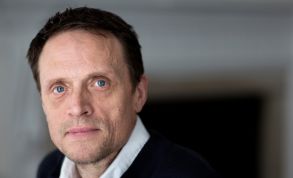No binary choice on health and care funding, Truss told
 The confederation was responding to reports that Conservative leadership candidate Liz Truss planned to move £10bn a year to social care – funding that is currently earmarked for the NHS under the health and social care levy. The levy raises around £13bn a year, initially through the 1.25 percentage point rise in national insurance and increased dividend tax rates introduced in April. It currently funds around £2bn a year for social care.
The confederation was responding to reports that Conservative leadership candidate Liz Truss planned to move £10bn a year to social care – funding that is currently earmarked for the NHS under the health and social care levy. The levy raises around £13bn a year, initially through the 1.25 percentage point rise in national insurance and increased dividend tax rates introduced in April. It currently funds around £2bn a year for social care.
When the levy was launched, the government said the vast majority of the funds would be allocated to the NHS in the initial years to help clear the NHS backlog. Then, it would review the balance of allocations to divert more funding into social care.
It is unclear whether her announcement – made at a leadership hustings – is a continuation of current government policy. Ms Truss had said that she would abolish the national insurance rise and instead find the funding from general taxation.
Confederation chief executive Matthew Taylor (pictured) said that NHS leaders would be strongly in favour of additional funding for social care. ‘They know that boosting the salaries and staffing levels in the sector will have a more immediate impact on tackling the backlogs and ensuring people can leave hospital sooner.
‘However, this should not come at the expense of funding that has been already committed for the NHS. Frontline services are already facing a real terms funding cut this year, with 105,000 vacancies and buildings in a state of disrepair.’
The new prime minister was not facing a binary choice, he added. ‘If this briefing is accurate and becomes policy, NHS leaders will face impossible choices on what to prioritise for their patients.’
Surgical hubs
Meanwhile, the Department of Health and Social Care announced that more than 50 new surgical hubs, backed with funding totalling £1.5bn, would be established to help tackle waiting lists in England. The funding was announced in last year’s spending review.
The hubs will deliver at least 100 more operating theatres and more than 1,000 beds, providing two million more operations over the next three years – more than 200,000 in 2022/23, 700,000 in 2023/24, and one million in 2024/25. They will focus on high volume, low complexity procedures, in areas such as ophthalmology, general surgery, trauma and orthopaedics (including spinal surgery), gynaecology, ear nose and throat, and urology.
As they will be separate from emergency services, bed availability should not be affected by periods of high emergency pressure.

Health and social care secretary Steve Barclay said: ‘We have already made progress in tackling the longest waiting lists to offer patients quicker access to treatment, and these new surgical hubs will in their own right deliver additional operations over the next three years, including over 200,000 this year alone.’
NHS chief executive Amanda Pritchard (pictured) said surgical hubs were a vital part of England’s elective recovery plans. She added: ‘The NHS has made significant progress already, virtually eliminating two year waits for care by the end of July. And from surgical hubs to robotic surgery, our staff continue to find innovative ways to speed up care for patients.’
Related content
The value masterclass shares examples of organisations and systems that have pursued a value-driven approach and the results they have achieved.
This webinar series offers colleagues of ICS organisations the opportunity to discuss common priorities, challenges, and successes within their field.